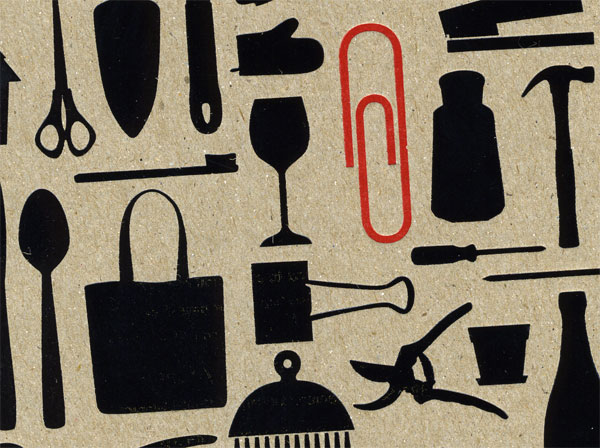
I read Fast Company’s story "The Rise and Fall of Design Within Reach" with great interest. DWR founder Rob Forbes wrote the introduction to my book on Design Research, and said that D/R was his original inspiration (he even tried to buy the name — might have been a good thing, given all the snarky variations on “within reach” out there). And now, like D/R in the late 1970s, DWR is suffering from over-expansion, loss of specialness, and the lack of a leader with personal design vision.
I am not really qualified to comment on matters of business, but I have been critical of DWR from a design perspective for some time. In the beginning, it had personality: Rob Forbes’s newsletters were folksy and community-building, making the shopper feel like they were part of a club. The products in the catalog (blessedly simple and devoid of personalized anything) were things I either hadn’t seen before or hadn’t seen for a long time. It felt fresh. But then — and I am not sure of the sequence — many things happened. Mid-century modern homes, looking just like the DWR catalog, began to appear in all the shelter magazines. Online outlets began selling all the same products as DWR, for cheaper prices. Mainstream furniture outlets started mid-century-esque cheaper lines (CB2, West Elm) and improved their own design. Design was within reach, in an economic sense and not at DWR. I began to feel like my DWR George Nelson bench was a cliche, rather than an icon. And Rob Forbes, the character, went away. DWR became just another catalog for me to instantly recycle.
Meanwhile DWR started opening stores. But the stores weren’t any better than the catalog. Sure, you could sit on the chairs, but you couldn’t take anything home with you. The accessibility that was the original meaning of “within reach” seemed to have returned; you didn’t need a designer to take you to the showroom, but you still needed to pay exorbitant shipping. Also, the stores had no personality. They were cool, clean warehouses (however nice the buildings) for DWR’s cool, clean furniture lines. You couldn’t learn anything there about putting your living room together differently than every other banker who had just bought a modern condo. You could just go down the street (in Soho) to Vitra, or Kartell, or Moss, and see the same things, or things that looked practically the same. Again, there was no reason not to buy the same thing elsewhere. Preferably from some nice young person in Brooklyn whose store was a labor of love.
That’s the way it was at D/R. Ben Thompson handpicked each item from a designer’s line to fit his vision of the comfortable home, and then he mixed it up: different countries, different price points, different levels of fame, different levels of design. He had textiles that were truly ethnic and authentic, rather than denatured contemporary versions of “colorful” and “wooly.” He had items that had no designer, but were perfect just the way they are, a la Kiosk. He and his Marimekko-clad saleswomen propped those rooms every week in different ways, so there was a reason to come back. Education wasn’t just about knowing and citing the designers’ names, but about putting it all together.
What DWR needs is a mash-up of their warehouses and a distribution and some idiosyncratic visions. I agree that the new term “curated” is hateful, but if there is any reason to keep the Studios open, they should be expositions of ways to use DWR’s stock as a decor tool rather than an end point. Bring in some design writers to resuscitate the newsletter. Find some young designers, don’t knock them off, and promote their reasonably-priced wares. (I know the Eames Lounge chair is made with the finest materials, but you are still paying for the name.) Find some reasonably-priced undesigned wares and sell them at the stores — but not forever. The design world needed DWR at the beginning, but it doesn’t anymore.

